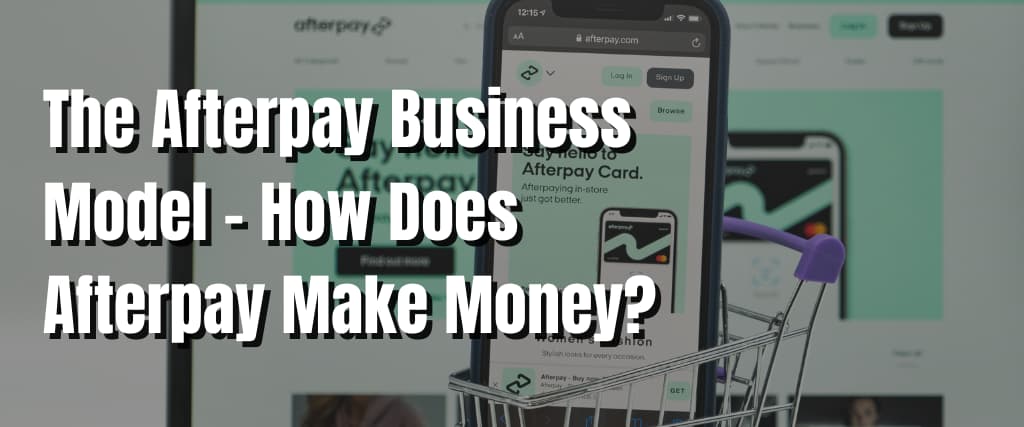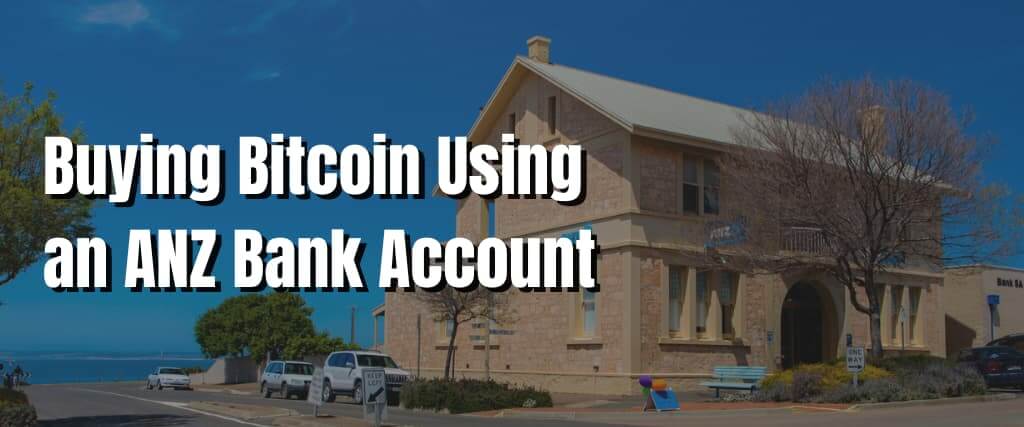
Afterpay makes money through fixed and varying merchant fees, delayed payment fees, and cost-per-click advertising. It allows customers to pay for goods in four instalments and has over 55,000 online retailers who accept this payment option.
Afterpay was established in 2014 in Sydney and has since grown to be one of the world’s leading companies in the Buy Now, Pay Later market, and could be the reason why Square announced in August 2021 that it was going to purchase it for an estimated amount of $29 billion.
What Is Afterpay & How Does It Work?

Afterpay, a FinTech company, offers Buy Now, Pay Later (BNPL) services to online shoppers throughout four instalments. This FinTech giant works with numerous online retailers such as ASOS, Pandora, The RealReal, Lululemon, Forever 21, etc.
To use Afterpay, customers will have to select Afterpay as their mode of payment when checking out from the online store. You will then have to pay for the items in four interest-free instalments. If paid on time, they won’t be charged with any interest or additional fees.
If you delay the payments, you won’t make any purchases on Afterpay as they’ll temporarily block your access. Late fees will be also be applied depending on the country you reside.

With Afterpay, you can order goods without paying any fees upfront and test them out first. If the item doesn’t meet your expectations, you can send them back to the retailer.
Examples of countries that can utilise Afterpay include Australia, New Zealand, Canada, the United Kingdom, and the United States. Customers can access Afterpay from their official website or mobile phone application, available for iOS and Android devices.
Afterpay Overview

Afterpay is headquartered in Sydney, Australia and was founded by Nick Molnar and Anthony Eisen.
Molnar had some experience as an entrepreneur before launching Afterpay at 24. He would import headphones from Japan and sell them online when he was 14. Though the business didn’t blow out as he had hoped, he learned a valuable lesson from it all.
As a teenager, he worked at his parents’ store, St Michel Internationale, a jewellery store based in Sydney. Molnar then joined the University of Sydney (on a rugby scholarship) and started selling excess items from a shop supplier on eBay during his first year on campus.

One unique thing about Molnar is that he knew how to persuade people from a young age and managed to convince his father to take him to the US to meet his jewellery supplier. He then persuaded the supplier to be his sole partner.
In his second year of University, Molnar sold $1.6 million worth of jewellery on his eBay shop. As much as he became successful in his business early, he always wanted to work in investment banking.
When he graduated, he started working at a private equity firm—as an investment analyst at M. H. Carnegie & Co. He would venture capital firm out of Sydney even though the firm’s managing director, Mark Carnegie, didn’t support the idea of Molnar working as an investment banker.
Mark Pursues His Business
Carnegie advised Molnar to pursue his company (with an assurance that he would take him back if it didn’t work out), giving him five times more than he was getting as a banker.
Molnar took Carnegie’s advice and entirely focused on his online company, and closed a deal a few months after going full time with one of the biggest online jewellery retailers in North America.
But that’s not all—Mark Carnegie was among the few people who saw Molnar’s ambition and determination—he would spend days and nights in his home office building Ice.
A few street blocks from Molnar, Anthony Eisen, a Chief Investment Officer, would spend nights operating business affairs for Guinness Peat Group, and Eisen noticed Molnar would pull in long hours like him.
One day, he then approached Molnar when he noticed him walking across the street and asked what he was working on. The conversation sparked a friendship, and they were made the catalyst for launching Afterpay.
AfterPay Came to Light in 2014

By the time they started developing Afterpay, numerous Buy Now, Pay Later businesses had already spread across the globe. Examples of startup companies were Affirm and Klarna, which gained big valuations and made millions.
Afterpay was launched in early 2015, and its first merchant partner was Ice Online, which was another advantage.
Molnar’s main focus afterwards was to increase its merchant base. Ice Online allowed Afterpay to work with other merchants rapidly, and many say that Molnar’s convincing and sales skills paid off as the merchant pool did grow.
The Company decided to go public in May 2016, a move that surprised many. As a result, the company was valued at $150 million and consolidated another $25 by IPO.
Afterpay Gets into a Partnership

In February 2017, Afterpay partnered with Touchcorp, one of its most significant shareholders. This partnership helped Afterpay merge its more extensive retail network with Touchcorp’s better technology. Additionally, this partnership made these two companies one of Australia’s largest stock exchanges.
And now that Afterpay has more resources, its growth became more rampant, launching the first iPhone application by May 2017 and getting into the New Zealand market, the first foreign market it could boast of. And in the same year, Afterpay happily announced the registration of their one-millionth customers since they were established.
Another instrumental advantage was their customer feedback and testimonials. Influencers like Kylie Jenner regularly tweeted about Afterpay, boosting customer reach and creating more awareness.
Afterpay then quickly leveraged clout to “steal” customers from their immediate rivals. But more success was imminent and seemed very likely when Afterpay entered the United Kingdom market and acquired the “Buy Now, Pay Later” service.
However, not everything was a bed of roses for the million-dollar company. And as you’d expect for any company, there were several ups and downs. In 2018, the company registered its first phase of challenges. According to a report, Afterpay went low and purchased a $300 liquor through their platform.
Afterpay Suffers Anti-Money Laundering Challenges

More troubles were dropping in. In 2019, Afterpay was accused of money laundering, failing to fulfil the requirements by law. And because of this, the company spent millions trying to comply with the same laws it was accused of defying. Good news, though, because the Australian Transactions Report and Analysis Centre affirmed that Afterpay had now complied with the regulations.
And like you’d expect with any buy now, pay later companies, Afterpay was subjected to numerous criticism, especially that of people claiming that they lured people into debt.
Even though Afterpay has had the worst of times in their business, these challenges have made them stronger and motivated them to continue spreading their global presence. And while the COVID-19 pandemic might have destabilised most companies, Afterpay has greatly benefited because more people have resorted to buying online.
The company is still growing steadily despite the many hurdles it has experienced. In fact, in August 2020, PayPal hinted that it would provide a buy now and pay later service, but this too hasn’t affected Afterpay in any way.
And after many months of rapid development, Square, an American FinTech giant, has shown its interest in acquiring Afterpay in a deal worth more than $29 billion. According to some reports, this deal could be finalised by early 2022.
How Does Afterpay Make Money?

Afterpay makes money through late payment fees, merchant fees, and cost-per-click advertising. Additionally, this FinTech company generates income from foreign branches, such as Clearpay, based in the United Kingdom.
Merchant Fees
As mentioned previously, Afterpay doesn’t charge customer interests, and neither do additional fees apply. However, merchants pay for every transaction made through its payment gateway.
With every transaction Merchants make, they’re charged a 30% fee and pay a variable fee of about 4 to 6 percent. Merchant fees vary on the value and volume a merchant sells—the more a merchant makes, the lower their fees.
There are various reasons why online sellers accept the buy now, pay later option on this platform. The first reason is that it takes the payment default risk while also taking advantage of the debt collection process whenever necessary.
The second reason is that Afterpay increased its total instalment value to between 10 to 20 percent. And finally, Afterpay is well known for its payment options, which attracts more customers and lead to high conversion rates—more customers mean only a few products are returned on average.
Late Payment Fees

Afterpay also makes money from late payment charges, which is paid when customers fail to clear their payments on time (with settlement dates always specified on the invoice). The first action Afterpay takes when a customer fails to make payments on the due date is to cut the instalment from their credit or debit card automatically.
Afterpay charges a $10 fee initially, though $7 will be charged whenever an invoice remains pending for seven days. For any purchase below $40, the late payment fees can’t be over $10, and all orders above $40 get you a fee of up to $68.
Cost Per Click Advertising
Afterpay brought to light an advertising app in August 2021. This application allowed customers to market and promote their deals.
Ads will be shown in iOS and Android applications, with the million-dollar company bagging its revenue from cost-per-click advertising. In other words, Afterpay will receive a small fee each time a customer clicks on any of their promotions.
And because Afterpay lists millions of downloads, merchants can expect higher returns, especially when advertising on Afterpay’s application.
Afterpay Funding, Valuation & Revenue

In a report by Crunchbase, Afterpay has managed to raise 448.7 million across three funding rounds.
Some of the biggest investors include Coatue, Mitsubishi, and Tencent. But that’s not all; the company also accumulated a total of $25 million in 2017.
It was worth $1.6 billion at the IPO time. As of this writing, Afterpay has now grown to $29 billion; the exact price Square was willing to offer so that they could purchase the company.
In 2021, the company generated a revenue of $924.7 million, a seventy-eight percentage increase from the previous years.






